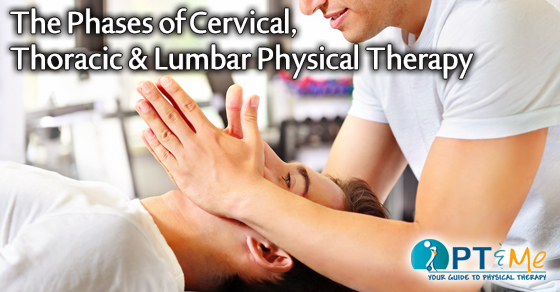
A great cervical, thoracic and lumbar physical therapy program is very important for patients who have experienced surgery. Rehabilitation will be modified based on body region and type of surgery.
Pre-Operative Phase
Prior to surgery, your physical therapist will perform a comprehensive evaluation to assess your mobility, strength, coordination, and function in order to create a customized home exercise program to perform in preparation for your surgical procedure. This program will be important for you to perform until you have surgery to help improve your recovery after surgery.
NON-FUSION PHYSICAL ACTIVITY PROGRAM
Phase 1 Post-Operative (0 – 4 Weeks Post-Op)
During this phase, you will undergo light activities, like walking. During this time, it is imperative that you perform the home exercise program your physical therapist taught you to improve muscle function, and help improve healing. During this time, you may exhibit pain and soreness due to the surgery. This is a normal part of the healing process.
- Immediately following your surgery, you will be allowed to perform very light, gentle, activities of daily living around your home. However, do not lift more than 10 pounds (a milk jug), and go slowly when bending or twisting.
-
Walking is important to perform consistently as well. Move around your house, ensuring that the area is free of any obstacles which can cause you to fall. Walking around the block should be the limit to what you do in the first 2 weeks. This duration can be increased but should stay under one quarter of a mile for the first 4 weeks.
-
Healing is most important during this phase and post-surgical pain and soreness is normal.

Phase 2 Post-Operative (4 – 6 Weeks Post-Op)
During this phase, you will start physical therapy. Physical therapy during this phase will involve exercises to improve your mobility, strength, and stability. Due to an increase in activity during this time, it is normal to exhibit increased muscle soreness with physical therapy. The soreness will resolve as your muscles get stronger.
- Formal physical therapy as prescribed by your surgeon will start.
- Physical therapy will include a comprehensive evaluation to determine the appropriate treatment to improve mobility, strength, stability, and coordination.
- It is normal to experience muscle soreness during this time with your program. Each person’s body has a different activity threshold that needs to be reached to make physical improvements and muscular soreness is a healthy, safe response to working in this threshold.
- As your activity threshold level improves, the soreness will resolve.
Phase 3 Post-Operative (7 – 10 Weeks Post-Op)
During this phase, physical therapy will focus on dynamic exercises and activities emphasizing multiple planes of motion. During this time, you can expect more complicated exercises to challenge your coordination and stamina for reaching your goals.
- During this phase, physical therapy will increase intensity in regards to your appropriate activity threshold.
- Exercises and activities will become more challenging, more dynamic, and will involve multiple planes of motion to simulate and retrain muscles to complete your daily or recreational activities.
- Your custom physical therapy program will include specific activities and exercises to prepare you for return to your functional goals.
Information provided by PT and Me physical therapy partner, Rehab Associates of Central Virginia. R.A.C.V. has 13 locations throughout central Virginia. More information about Rehab Associates of Central Virginia can be found on their website at www.racva.com.




